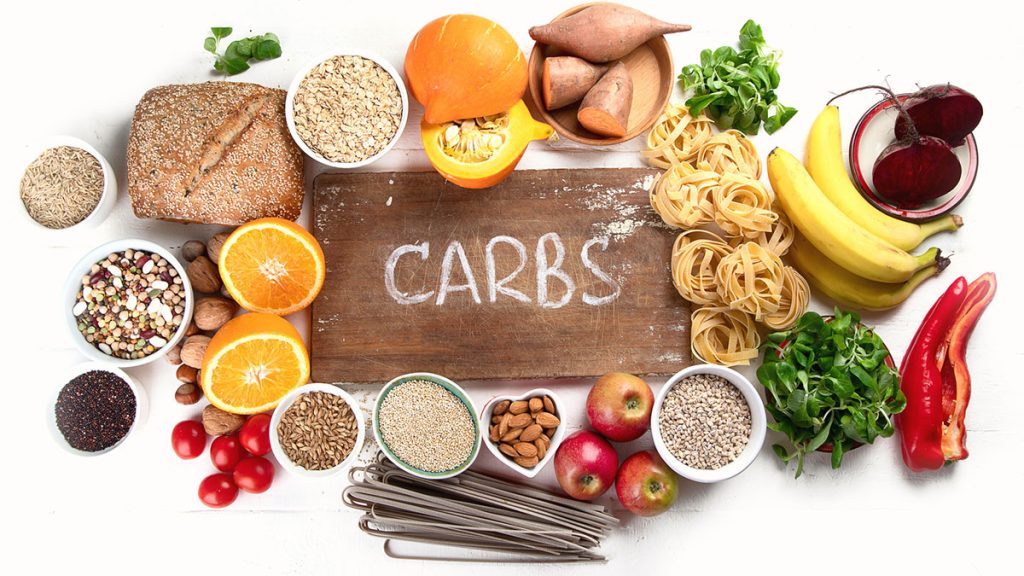Strategies to Incorporate Whole Foods into Your Daily Diet

Embracing Whole Foods for a Healthier Life
In today’s fast-paced world, adopting a diet rich in whole foods is more essential than ever. These minimally processed items not only offer maximum nutritional benefits, but they also help cultivate a mindful relationship with food. Whole foods, which include fruits, vegetables, whole grains, nuts, seeds, and lean proteins, are packed with an array of vitamins, minerals, and antioxidants crucial for optimal health. Yet, the challenge lies in how to effectively incorporate these foods into your daily routine without feeling overwhelmed.
Here are some straightforward strategies to help you make the shift:
- Start with Breakfast: Breakfast is the most important meal of the day. Instead of sugary cereals, opt for oatmeal topped with fresh fruits like berries, which are rich in antioxidants. Alternatively, blend a smoothie with leafy greens, bananas, and a handful of nuts for a nutrient-rich kickstart that will keep you satiated until lunch.
- Grocery Shopping Smart: When navigating the supermarket aisles, it’s wise to shop the perimeter of the store where fresh produce, meats, and dairy items are typically located. This strategy helps avoid the processed food aisles found in the center, ensuring you fill your cart with wholesome options. Local farmers’ markets are also excellent places to find seasonal and organic produce, often supporting local economies as well.
- Meal Prep: Dedicating a few hours each week to meal prep can fundamentally alter your eating habits. Preparing healthy meals using whole ingredients in advance saves time and reduces the temptation to resort to fast food. Consider cooking a big batch of quinoa or brown rice and pairing it with roasted vegetables and grilled chicken. Store these in portion-controlled containers for quick lunches throughout the week.
- Experiment with Recipes: To keep meals exciting, experiment with diverse cooking methods and recipes. For instance, try roasting vegetables with spices, making whole grain salads, or stir-frying colorful veggies with tofu. The more variety you incorporate, the more likely you’ll stay engaged with a whole-foods diet.
By consciously choosing whole foods, you not only fuel your body, but also embrace sustainable living. Whole foods often have a smaller carbon footprint compared to processed alternatives, contributing positively to the environment. Moreover, research suggests that diets rich in whole foods may help prevent chronic diseases such as heart disease, diabetes, and obesity.
Are you ready to discover how easy it is to transform your meals and improve your wellbeing? Each small step can lead to substantial changes, promoting a healthier lifestyle that resonates with both personal health and planetary sustainability. Dive into the vibrant world of whole foods and relish the profound benefits they bring!
DIVE DEEPER: Click here to discover the impact of community activities

Simple Implementations for Daily Success
Incorporating whole foods into your daily diet doesn’t have to be a daunting task. In fact, there are numerous strategies that can seamlessly integrate these nutrient-dense gifts from nature into your meals and snacks. The key is to make small, manageable changes that can lead to lasting habits.
1. Cook at Home More Often
One of the most effective ways to embrace whole foods is to increase your home cooking. Preparing meals from scratch allows you to have complete control over the ingredients you use, ensuring that they are as wholesome as possible. Focus on incorporating a variety of whole food elements in your dishes. Whether it’s a hearty vegetable soup loaded with greens and legumes or a simple stir-fry with lean proteins and colorful veggies, the options are endless. By getting comfortable in the kitchen, you can also discover new culinary skills and foster a greater appreciation for food.
2. Snack Wisely
Snacking can be a significant part of your daily diet, so it’s crucial to make wise choices. Replace processed snack items with nutritious whole food alternatives. Some tasty options include:
- Fresh fruit: Grab an apple, banana, or a handful of berries to satisfy your sweet tooth.
- Veggie sticks: Carrot, cucumber, or bell pepper slices paired with hummus or guacamole provide a crunchy snack that’s both fiber-rich and delicious.
- Trail mix: Create your own mix with nuts, seeds, and dried fruit for a quick energy boost that’s full of healthy fats.
By having snacks prepared in advance, you can reduce the likelihood of grabbing unhealthy options when hunger strikes.
3. Start a Whole Foods Challenge
Engaging in a structured challenge can help motivate you to incorporate more whole foods into your diet. For instance, consider participating in a 30-day whole foods challenge. This can be as simple as committing to cook with only whole food ingredients each week or trying a new whole food recipe daily. Document your progress and feelings throughout the challenge—whether it’s more energy or improved digestion. This not only holds you accountable but makes the process engaging and fun.
4. Educate Yourself
The journey toward a whole foods diet is enriched by knowledge. Take the time to learn about the benefits of whole foods and how they affect your health. Resources like cooking classes, nutrition workshops, and reputable health blogs can offer valuable insights and inspiration. Understanding the science behind whole foods can empower you to make more informed choices, supporting your overall well-being.
In summary, successfully incorporating whole foods into your diet revolves around simplicity, creativity, and commitment. By gradually introducing these strategies into your daily routine, you can build a sustainable lifestyle that enhances your health and enriches your enjoyment of food.
| Category | Key Features |
|---|---|
| Meal Preparation | Batch cooking whole foods can save time and ensure access to healthy meals. |
| Grocery Shopping | Focusing on the perimeter of the grocery store typically leads to more whole foods. |
| Incorporating Snacks | Swapping out processed snacks for nuts, fruits, or veggies to boost nutrition. |
| Family Involvement | Engaging family in cooking promotes healthy eating habits and creates lasting memories. |
Exploring various strategies to seamlessly incorporate whole foods into your daily diet can significantly improve overall health and wellness. By focusing on meal preparation, you can optimize your cooking practices, making healthy eating not just an option but a habit. Planning grocery trips with an emphasis on the perimeter of stores often leads to discovering fresh produce and whole ingredients rather than processed items lurking in the aisles. For many, convenience is a factor that influences dietary choices. Replacing processed snacks with whole food alternatives like fresh fruits, nuts, or vegetables not only enhances nutritional intake but also keeps you satiated longer. Moreover, including family members in the cooking process builds both an appreciation for healthy meals and meaningful connections around the dinner table. These strategies not only enhance diet quality but also foster a community approach to healthy eating that is both rewarding and sustainable.
DISCOVER MORE: Click here to dive deeper
Expanding Your Palate and Pantry
Incorporating whole foods into your diet can open up a world of flavors and nutritional benefits. To ensure success in this endeavor, it is essential to broaden your culinary repertoire and pantry staples. By doing so, you can enjoy a more varied and exciting diet that can sustain your commitment to whole foods.
5. Explore Seasonal Eating
Embracing seasonal eating not only helps you access the freshest produce but also encourages a diet rich in whole foods. Seasonal fruits and vegetables are usually picked at their peak ripeness, leading to enhanced flavor and nutritional density. For example, the fall harvest offers squash, apples, and kale, while summer brings vibrant tomatoes, peppers, and berries. Plan your meals around these seasonal offerings by visiting local farmers’ markets or joining a community-supported agriculture (CSA) program. These options not only reduce environmental impact but also support local economies.
6. Experiment with Whole Grains
Many of us rely on refined grains like white rice or white bread, but switching to whole grains can dramatically increase the fiber and nutrient content of your meals. Options such as quinoa, brown rice, barley, and farro are versatile choices that can be used as bases for salads, side dishes, or as hearty additions to soups. Experiment by incorporating whole grains into your recipes, perhaps by making a filling grain bowl topped with roasted vegetables and a protein of your choice. This not only enhances the taste but also brings a wide variety of vitamins and minerals to the table.
7. Learn to Read Labels
If you’re transitioning to more whole foods, being able to navigate the grocery store aisles effectively is crucial. Learning to read food labels can help you discern which products contain whole food ingredients. Look for options with minimal processing and avoid items with long lists of artificial additives, preservatives, or added sugars. Familiarize yourself with common marketing terms such as “whole grain,” “organic,” and “natural.” By being an informed shopper, you empower yourself to make healthier choices that align with your whole food goals.
8. Join a Cooking Group or Class
Social support can be a powerful motivator in adopting new habits. Consider joining a cooking group or a class focused on whole foods. Sharing the experience with others can introduce new techniques, recipes, and ideas for incorporating wholesome ingredients into your meals. Not only will you develop culinary skills, but you’ll also create a supportive network that encourages you to stay committed to your dietary changes. Plus, sharing meals prepared with whole foods can be both nurturing and a lot of fun!
As you explore these strategies, remember that the journey towards incorporating whole foods is not about perfection; it’s about enhancing your dietary choices with delicious and nutritious options. The more you practice and experiment, the more confident you will become in creating meals that are both satisfying and healthy.
DISCOVER MORE: Click here to enhance your fitness journey
Conclusion: Embracing Whole Foods for a Sustainable Lifestyle
Incorporating whole foods into your daily diet is not just a fleeting health trend; it’s a sustainable lifestyle choice that can have lasting benefits for your overall well-being. By exploring different strategies, from seasonal eating to experimenting with whole grains, you open yourself up to a world of culinary possibilities that are both satisfying and nourishing. Remember that the goal is not perfection, but rather a gradual shift towards making healthier food choices that can be embraced with enthusiasm.
As you become more familiar with reading labels, you’ll develop skills that empower you to make informed decisions that reflect your commitment to whole foods. Joining a cooking group or class not only enhances your cooking abilities but fosters a community that supports your health journey. This social aspect can be incredibly motivating, as sharing knowledge and experiences can lead to new recipes and ideas that keep your meals exciting.
Ultimately, the objective is to create a vibrant and diverse diet that enriches your life, introducing nutrient-packed foods and flavorful ingredients that can invigorate your health. With every meal, you have the opportunity to reshape your relationship with food, one whole ingredient at a time. So, take the plunge—experiment, taste, and enjoy the colorful array of whole foods that await you. The commitment to a whole foods lifestyle offers not just health benefits but also a deeper connection to what you eat and where it comes from, ultimately leading to a more fulfilling life.


